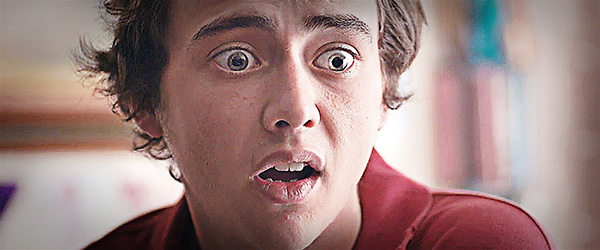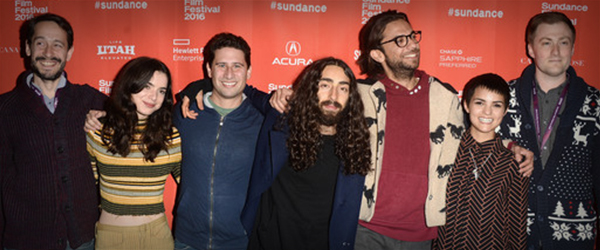Picture your favorite movie. Chances are that the setting plays a huge part in how you respond to it. Just imagine Clerks without the Quick Stop or Spotlight without the fluorescent-lit corridors of The Boston Globe—after all, you can’t make The Grand Budapest Hotel without the Grant Budapest Hotel, or Room without Room. Indie films of a certain budget level can be in a precarious position when it comes to securing filming locations. After a certain point it’s no longer feasible to steal shots guerilla-style off the street. But securing locations—whether through permits or private rentals—can be expensive. Luckily, there’s the Film LA grant. Available to Film Independent Fellows, LA Film Festival alum and Film Independent Spirit Award nominees and winners, the grant helps filmmakers secure permits for projects shot in Los Angeles. The Film LA grant awards permits to cover two weeks and up to 10 separate locations—an invaluable resource for creators looking to squeeze every last bit out of the budget in an environment where a few bucks can make or break an entire production. One film that benefited greatly from the Film LA grant is Kerem Sanga’s First Girl I Loved—a refreshingly honest coming-out and coming-of-age tale set in the dusty northern LA suburb of Chatsworth, which premiered to rave reviews at this year’s Sundance Film Festival. Sanga—whose last film, The Young Kieslowski, took home the Audience Award at the 2014 LA Film Festival—joined First Girl producers Ross Putman and David Hunter to chat with Film Independent Digital Content Manager Matt Warren about First Girl, the importance of location and how they put their Film LA grant to good use: First of all, tell me how First Girl I Loved came to be? Sanga: A few years ago, my sister came out to me. That got me started thinking about the story. I started writing the script and it just captured my attention a lot more than any of the other scripts I was working on, so I gave it to these two guys [Putman and Hunter]. They gave me a round of very smart notes and by the time that was done, The Young Kieslowski had premiered and we started thinking about the realities of production. It just sort of went from there. One of the things I loved about the film was that it had such a great sense of place, even though the setting isn’t 100% integral to the plot. Why did you decide to set the film in Chatsworth? Sanga: You’re absolutely right—it doesn’t figure too much into the story that it’s in Chatsworth [and not in] Arizona or whatever, but it’s important to make it specific. The more specific a place feels, the more you buy into it. I had a day job teaching standardized tests, so that took me to lots of places around LA. There’s a lot of LA that’s—for lack of a better word—segregated. Schools where it’s all Latino, or all black. But there’s something about the Valley—especially the north Valley, which for whatever reason more accurately reflects the actual cultural demographics of Los Angeles. So I liked that aspect of it, especially for casting. You could cast anybody and it would make sense that they would be there. Are you guys from Southern California at all? Putnam: David and I are from the East coast, but Kerem has family out here in California. Sanga: My mother recently moved here [to LA] like eight or nine years ago. But I grew up in Dallas and Austin. I actually lived here as a child, maybe three or four years old, but I haven’t really lived here since. I’m curious, do you guys have any favorite LA movies? Putnam: Heat’s a good one. Sanga: Yeah, Heat. Hunter: It’s not old, but I thought Tangerine was a great use of LA. ‘Cause nobody’s ever been like, “Okay, let’s hang out on Santa Monica.” It’s like, Ugh—I drive up and down this all the time! I really liked that one a lot. Yeah, you can really feel the dirt on the lampposts on Melrose and Vermont in that movie. Sanga: The funny thing is that Heat is like the exact opposite of that. That’s the cleanest Los Angeles I’ve ever seen. It’s all like glass and brushed metal. Could you describe the process of getting the Film LA grant through Film Independent? Putnam: I actually work for Film Independent on and off as a script reader, and I’ve known [Film Independent Director of Artist Development] Jen Kushner and her team for a long time, as well as [former LA Film Festival Senior Programmer] Maggie Mackay, who was our champion on The Young Kieslowski. She said, “Hey, do you have anything set in LA, because you qualify for this grant.” So we sent her the script and Jen really helped push it through on her end, because we were LA Film Festival alumni and we’ve all been involved at various levels with Film Independent.
Hunter: For a film like this—any film, really—the process begins very early on. For us it began before we knew exactly how much money we’d have in the budget, so getting the grant [saved us] so much time. Like, when you’re looking for a house and you have a hundred dollars more in your budget to pay the owner, it just makes it exponentially easier. What exactly did you get from the Film LA grant? Sanga: We got our [permit] application fee covered. The application fee for Film LA is $625 so that’s the cash value. Putnam: It sounds small compared with what it costs to rent a camera or whatever, but honestly depending on the location, every single dollar counts. Sanga: Early on we were looking for homes and [the homes we found] did not belong to people we knew. I was wondering if it was a friends-and-families situation, or what. Sanga: [laughs] I’d say we pretty much exhausted that on Kieslowski! Hunter: Not only did we exhaust that, [the grant] helped us find houses in Chatsworth. Not that the homes necessarily have to be in actual Chatsworth, but it helps because you’re shooting inside of a house and the architecture and look of the house informs the movie a lot. You want to have that few extra hundred dollars so you can actually rent someone’s house, instead of just shooting it in your apartment and making it look like a home. The locations are as important as the actors. Sanga: I would say setting is bigger than all of the characters. Characters are one thing and space is another. Space—it takes up what your eyes are looking at! Putnam: We’re doing a lot for our production, and we have to find a lot: a bar, two different softball fields, a school that would let us shoot forever, a bunch of different houses, streets, you name it. You start to add it all up and it’s like, Well, I hope we can meet these budget numbers! On First Girl I Loved we weren’t really compromising on locations, thanks to Dave’s ongoing and super-diligent work finding places. Sanga: I didn’t feel like I ever had to compromise on a location.
Learn more about First Girl I Loved by visiting the film’s IMDB page or website. To learn more about the Film LA grant as well as Film LA’s other filmmaker grant programs, including application dates and deadlines, click here. For more information about Film Independent, please visit our website or subscribe to our YouTube channel. Learn how to become a Member of Film Independent by clicking here. Matt Warren / Film Independent Digital Content Manager

